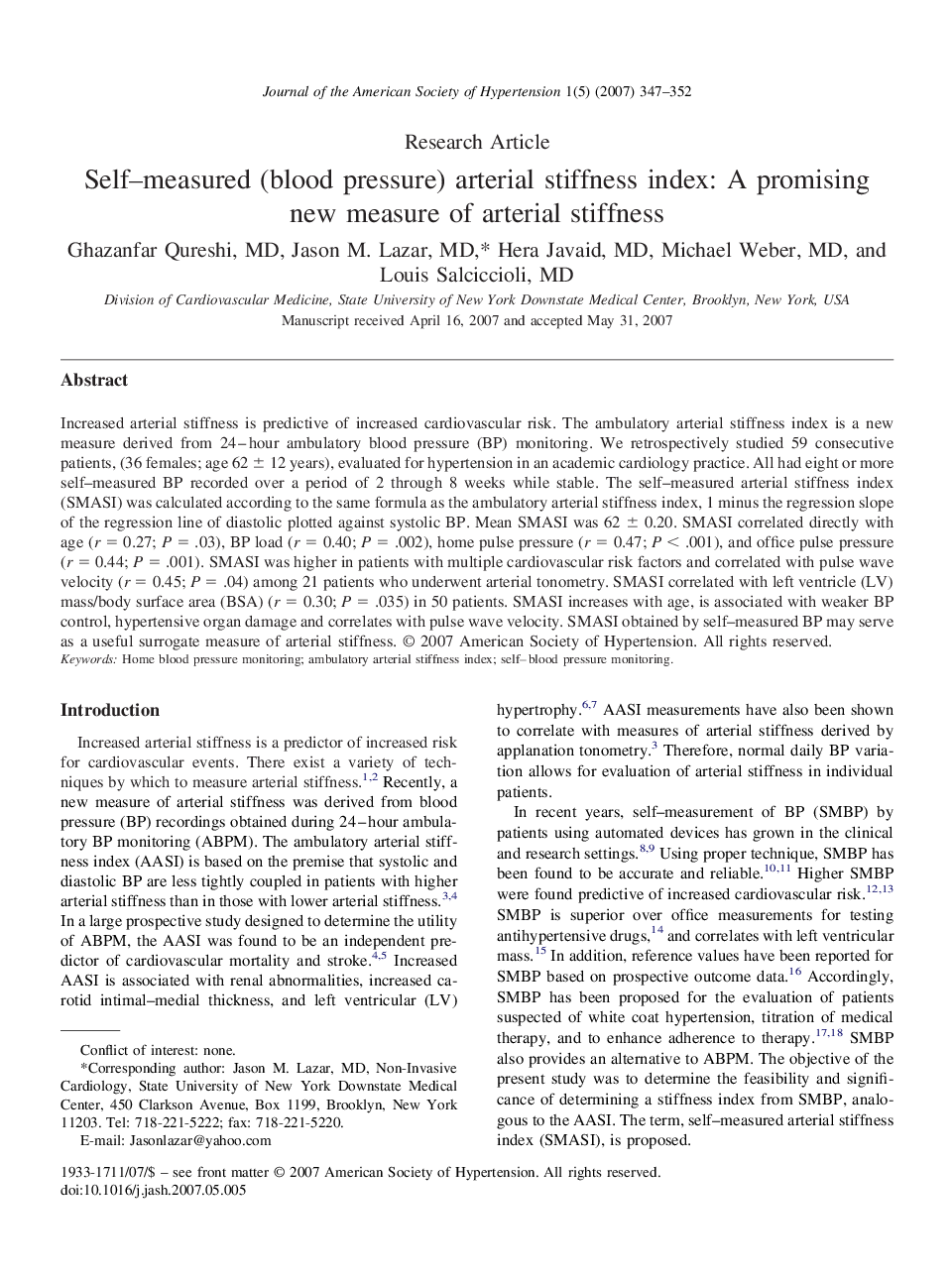| کد مقاله | کد نشریه | سال انتشار | مقاله انگلیسی | نسخه تمام متن |
|---|---|---|---|---|
| 2957358 | 1578096 | 2007 | 6 صفحه PDF | دانلود رایگان |

Increased arterial stiffness is predictive of increased cardiovascular risk. The ambulatory arterial stiffness index is a new measure derived from 24–hour ambulatory blood pressure (BP) monitoring. We retrospectively studied 59 consecutive patients, (36 females; age 62 ± 12 years), evaluated for hypertension in an academic cardiology practice. All had eight or more self–measured BP recorded over a period of 2 through 8 weeks while stable. The self–measured arterial stiffness index (SMASI) was calculated according to the same formula as the ambulatory arterial stiffness index, 1 minus the regression slope of the regression line of diastolic plotted against systolic BP. Mean SMASI was 62 ± 0.20. SMASI correlated directly with age (r = 0.27; P = .03), BP load (r = 0.40; P = .002), home pulse pressure (r = 0.47; P < .001), and office pulse pressure (r = 0.44; P = .001). SMASI was higher in patients with multiple cardiovascular risk factors and correlated with pulse wave velocity (r = 0.45; P = .04) among 21 patients who underwent arterial tonometry. SMASI correlated with left ventricle (LV) mass/body surface area (BSA) (r = 0.30; P = .035) in 50 patients. SMASI increases with age, is associated with weaker BP control, hypertensive organ damage and correlates with pulse wave velocity. SMASI obtained by self–measured BP may serve as a useful surrogate measure of arterial stiffness.
Journal: Journal of the American Society of Hypertension - Volume 1, Issue 5, September–October 2007, Pages 347–352